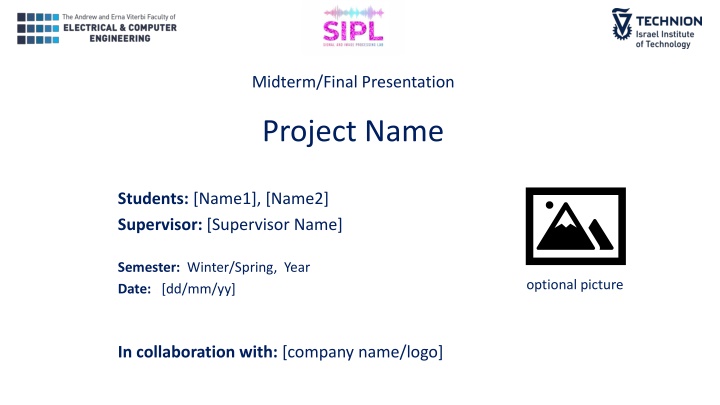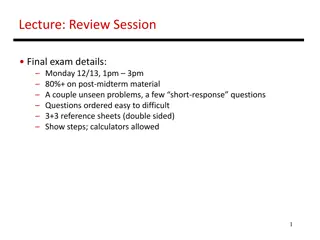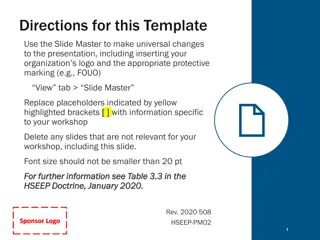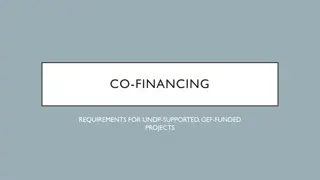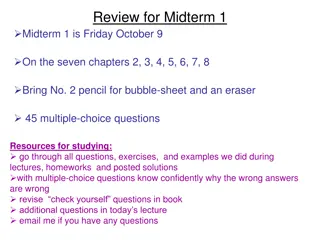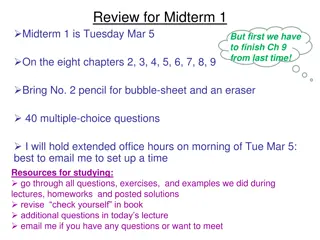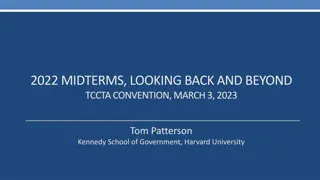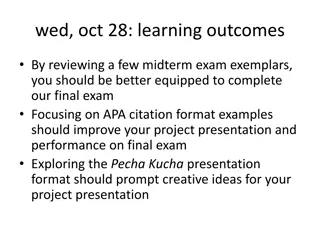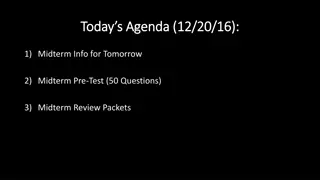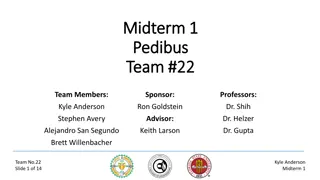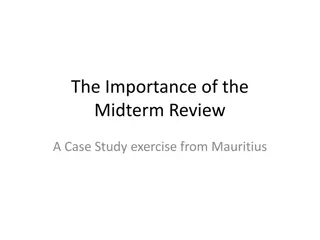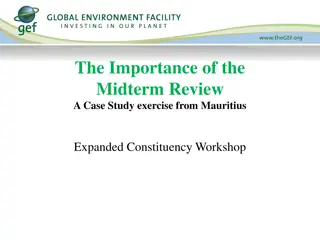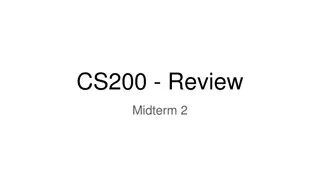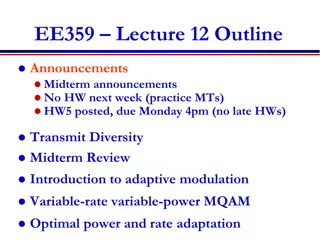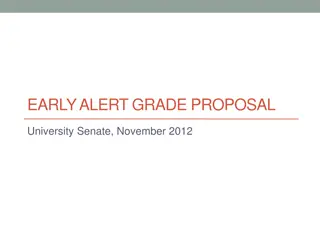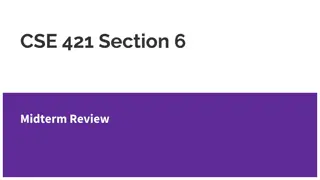Midterm/Final Presentation Project Details
This project presentation covers the outline, goal, background, literature survey, chosen solution, results, conclusion, work so far, and future work of the project. It includes collaboration with a company, important details, solutions overview, comparison with other solutions, and original contribution emphasis.
Download Presentation

Please find below an Image/Link to download the presentation.
The content on the website is provided AS IS for your information and personal use only. It may not be sold, licensed, or shared on other websites without obtaining consent from the author.If you encounter any issues during the download, it is possible that the publisher has removed the file from their server.
You are allowed to download the files provided on this website for personal or commercial use, subject to the condition that they are used lawfully. All files are the property of their respective owners.
The content on the website is provided AS IS for your information and personal use only. It may not be sold, licensed, or shared on other websites without obtaining consent from the author.
E N D
Presentation Transcript
Midterm/Final Presentation Project Name Students: [Name1], [Name2] Supervisor: [Supervisor Name] Semester: Winter/Spring, Year Date: [dd/mm/yy] optional picture In collaboration with: [company name/logo]
Outline This slide should contain an outline (list of headings) of the presentation Maximum 5-6 bullets 2
Project Goal Describe the goal of the project What is the problem you face? What you want to achieve? 3
Background A general description of background The environment and context Motivation (why is it an interesting problem?) 4
Literature Survey Describe existing solutions to the problem that you have found in the literature survey For each solution, give a general overview, some details, pros and cons (quality, complexity, cost, ) 5
Chosen Solution Emphasize the key idea If the audience remembers only one thing from your talk, what should it be? Then, give a more detailed explanation of the chosen solution You usually start with a block diagram slide followed by a few more slides describing each block in the diagram in detail Prefer deep details (technical meat ) of part of the solution over a shallow overview of many topics 6
Results Present your results compared to other solutions and emphasize the advantages (and disadvantages) of your solution Give examples Illustrate the idea in action Show extreme cases 7
Conclusion Repeat the project goal in other words Have you achieved the goal? (if not, that s fine and you have to explain why) Summarize your results Emphasize original contribution 8
Work So Far Your work stages in the project so far 9
Future Work Suggested direction to continue your work 10
References Only the most important references should be mentioned here, in IEEE format Here are some examples: 1. Yariv Ephraim and David Malah. "Speech enhancement using a minimum-mean square error short-time spectral amplitude estimator." IEEE Transactions on Acoustics, Speech, and Signal Processing 32.6 (1984): 1109-1121. 2. Oded Schlesinger, et al. "Blood Pressure Estimation from PPG Signals Using Convolutional Neural Networks and Siamese Network." IEEE International Conference on Acoustics, Speech and Signal Processing (ICASSP), 2020. 11
Assumptions You cannot assume that your audience is aware of your project remembers your specification form or midterm presentation knows all the relevant theory You can assume that your audience has a general knowledge of signal processing E.g., no need to explain what a filter is or what deep learning is Emphasize aspects that are unique to your project rather than general concepts 12
Giving Your Talk Show enthusiasm If you do not seem excited about your project, why should the audience be? Make sure that the presentation takes the required amount of time About 25 minutes for a midterm presentation About 40 minutes for a final presentation Practice Know the material Prepare for questions 13
Giving Your Talk - Technicalities Face the audience, not the screen Point at the screen, not at your laptop With a laser pointer or a PowerPoint virtual laser pointer and not with your hand Make eye contact Use your voice and body language effectively Voice: louder/softer, higher/lower, faster/slower, pauses and repeats Body language: can convey emphasis and excitement 14
Presenting Information Don t include details that you do not intend to describe Describe everything that is included in the slides Define unknown terms before using them Specify the axes and units of graphs 15
Presenting Information Prefer visualizations and animations over text But only use them when they are relevant, not just to show off No need to reveal the points one-by-one, unless there is a punch line Use short sentences Do not use very long sentences like this one, which end after many words, contain many details and are difficult to follow or understand 16
Formatting Do not show too many details in a single slide Use a large font size, even in graphs and diagrams Make your slides look professional Use consistent formatting Look for typos and small issues Use high-quality images and graphs Emphasize with colors, font weight and font size But do not do that too much Prefer a white or other solid-colored background 17
